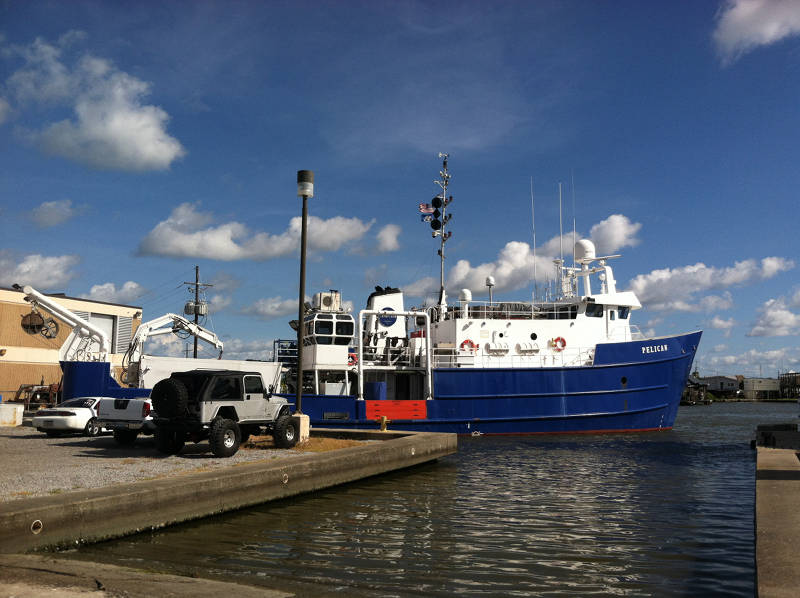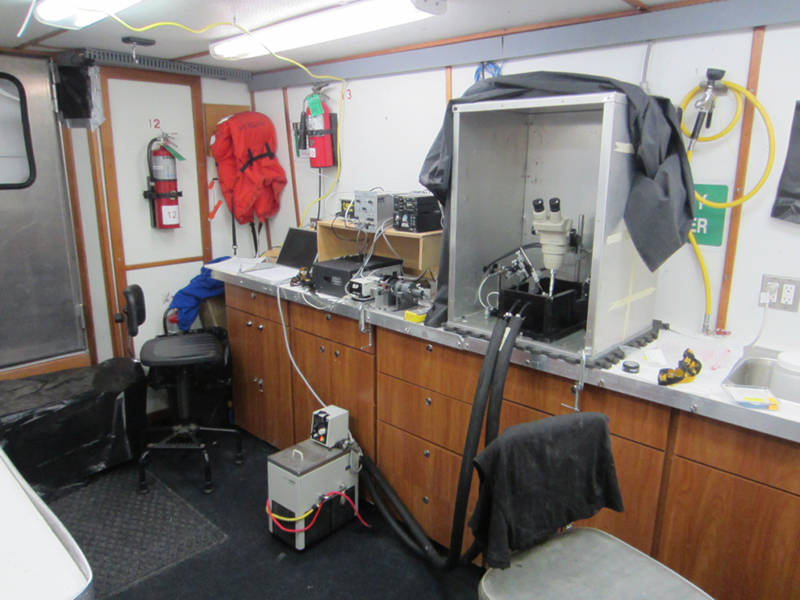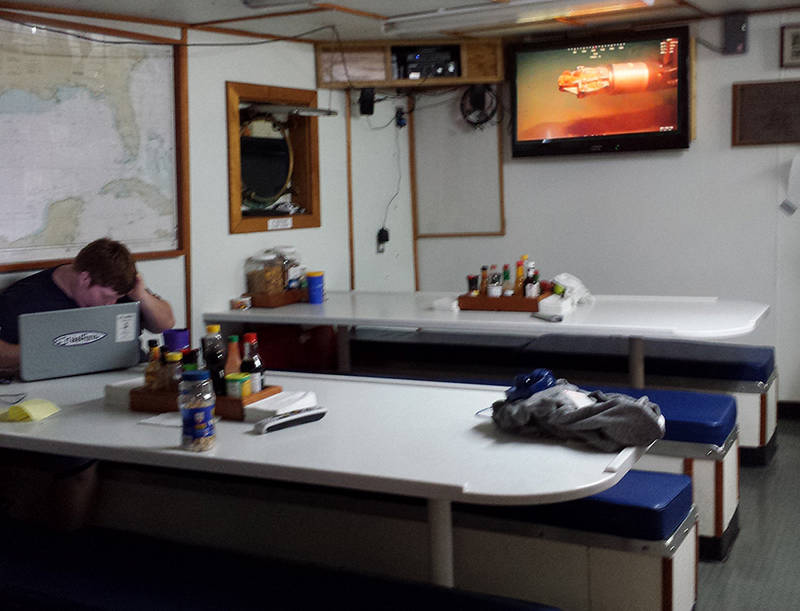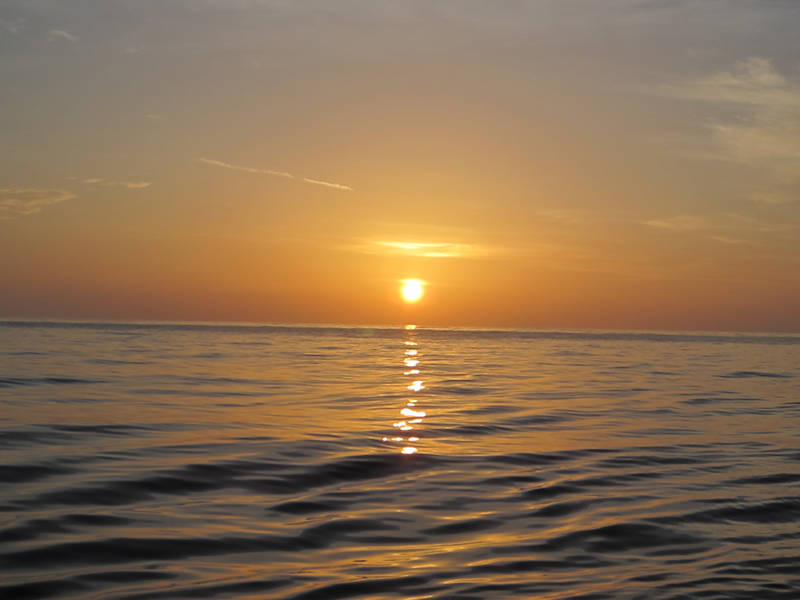
By Eric Burdett - Research Assistant, Nova Southeastern University
July 19, 2015

R/V Pelican in dock ready to depart on the Bioluminescence and Vision on the Deep Seafloor 2015 expedition. Image courtesy of NOAA Bioluminescence and Vision on the Deep Seafloor 2015. Download larger version (jpg, 1.7 MB).
The well-seasoned members of the research expedition knew what to expect ahead of time; however, for some of the graduate students such as myself, this is our first experience living at sea. The R/V Pelican is an impressive 116-foot research vessel with an enthusiastic crew, who helped us load all of our lab equipment and personal gear on board when we first arrived.

Wetlab research facility aboard the R/V Pelican. Image courtesy of NOAA Bioluminescence and Vision on the Deep Seafloor 2015. Download larger version (jpg, 657 KB).
We immediately went to work setting up our labs. After we had most of the equipment in place, I took a walk around to check out the rest of the living conditions. At first, it was a little startling to see how small the bathrooms and bedrooms are; however, there must be enough space for our team of 11 scientists plus all of the crew members. There isn't much time to spend in our small, four-bunk bedroom anyways, since our typical day at sea is full of fun activities.
The day begins at the crack of dawn, with breakfast being served at 6 am. Shortly after that, it's time to deploy the remotely operated vehicle (ROV) for our morning dive. A typical ROV dive can last anywhere from one to six hours, depending on the water conditions and how much life is being found and collected on the seafloor. The professors and the ROV crew crowd in the tiny ROV command shed, where they take detailed notes and collect samples of any specimens that they find interesting. Crabs, shrimp, octocorals, anemones, and many other species are being collected and tested for visual sensitivity and bioluminescence over the course of the two-week trip.

Common room used for watching video feeds from the ROV Global Explorer. Image courtesy of NOAA Bioluminescence and Vision on the Deep Seafloor 2015. Download larger version (jpg, 243 KB).
While the professors are busy in the command shed, my fellow graduate students and I can be found in the galley of the ship. Here, we eagerly watch a live stream of the dive on a big-screen TV while we take notes on the dives, analyze data, or work on our individual thesis projects. Once the ROV surfaces, we fill buckets with ice cold sea water and rush out to collect our awesome specimens and process them. I am helping my advisor, Dr. Tammy Frank, perform visual sensitivity studies on several species of shrimp and crabs throughout the duration of the cruise.
Through all of the morning's excitement, we must remember to be in the galley for lunch at 12 pm before all of the food is eaten. Our cook, Isabella, is an amazing chef and always provides a deliciously satisfying meal. An afternoon ROV dive is followed by another round of collecting and processing more specimens, and then we enjoy a tasty dinner at 6 pm.

Sunset from the deck of the R/V Pelican. Image courtesy of NOAA Bioluminescence and Vision on the Deep Seafloor 2015. Download larger version (jpg, 475 KB).
The evenings are generally laid back. Some people finish processing samples, while others like to stand out on the deck of the ship and watch the gorgeous sun set over the horizon. After relaxing for a few hours, most of us are eager to get some rest. As we all slowly filter from the galley to our bunks, we cannot help but wonder what surprises will be in store for us in tomorrow's dives!